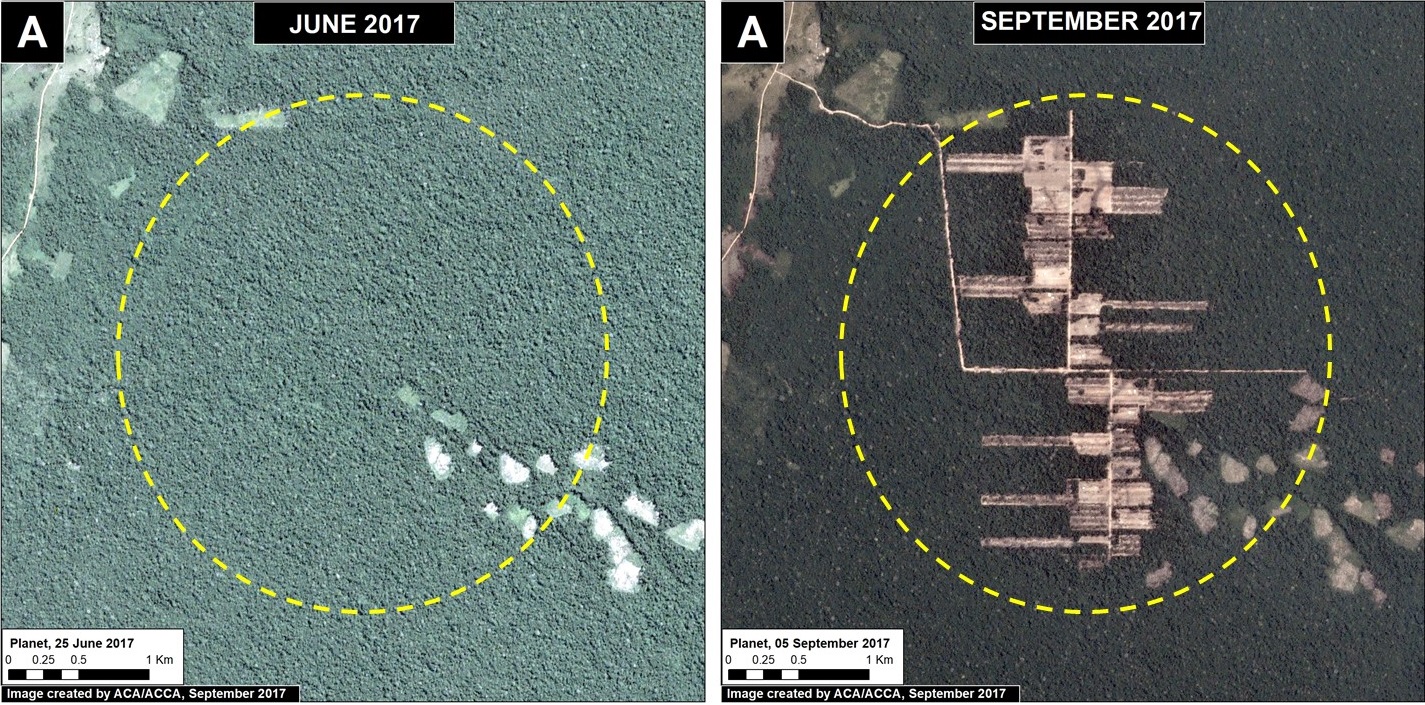Thanks to early warning forest loss alerts (known as GLAD), we recently detected several alarming new deforestation patterns within remote, primary forest of the central Peruvian Amazon.
They appear to be related to medium or large-scale agricultural activities due to their distinct characteristics: straight access paths extending from secondary roads built deep into primary forest, and deforestation of rectangular/square plots.
These patterns are significant because they are very different than the usual patterns observed with small-scale agriculture in the Peruvian Amazon: scattered plots with no major linear features.
Here, we show satellite images of 3 areas in the central Peruvian Amazon (see Base Map) that have recently experienced these alarming patterns, and deserve urgent attention due to the threat of rapid deforestation of large swaths of primary forest.*
North of Imiria Regional Conservation Area (Ucayali)
Just north of Imiria Regional Conservation Area (Ucayali region), we documented the construction of a new access road and deforestation of 445 acres (180 hectares) of primary forest between June and September 2017 (Image 69a). In the September image (right panel), the linear features of the access path and agriculture plots are clearly seen. It also appears that there is much potential for continued deforestation into the surrounding primary forest. Sources indicate that this deforestation is linked to a farming association, however it is not yet known for what type of crop. The deforestation is only 2 km away from the Imiría Regional Conservation Area.
Nueva Requena (Ucayali)
In the remaining primary forests of the Nueva Requena district (Ucayali region), we documented the clearing of three linear paths, totaling 9 km, and the subsequent deforestation of 188 acres (76 hectares) (Image 69b). These paths are located within national forestry lands (known as Permanent Production Forest), indicating that the new deforestation is part of an illegal invasion. It is important to note that this area was recently in the news regarding the killing of six farmers over land rights dispute and is close to controversial large-scale oil palm projects (MAAP #41).
Orellana (Loreto)
Further north, near the town of Orellana (Loreto region), we documented the rapid clearing of a series of linear paths, totaling 19 km, followed by the deforestation of 255 acres (104 hectares) of primary forest (Image 69c). Note the deforestation in the form of numerous rectangular plots. As in the above examples, there is much potential for continued deforestation into the surrounding primary forest.
Notes
*According to the Supreme Decree (No. 018-2015-MINAGRI) approving the Regulations for Forest Management under the framework of the new 2011 Forestry Act (No. 29763), the official definition of primary forest in Peru is: “Forest with original vegetation characterized by an abundance of mature trees with species of superior or dominant canopy, which has evolved naturally.” Using methods of remote sensing, our interpretation of that definition are areas that from the earliest available image are characterized by dense closed-canopy coverage and experienced no major clearing events.
Reference
Planet Team (2017). Planet Application Program Interface: In Space for Life on Earth. San Francisco, CA. https://api.planet.com
Special Thanks
We would like to express our gratitude to Michael Valqui for his contributions during the preparation of this article.
Citation
Finer M, Novoa S (2017) New Alarming Deforestation Patterns in the Central Peruvian Amazon. MAAP: 69.
























